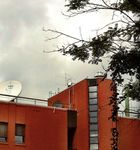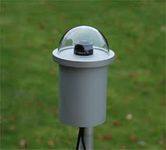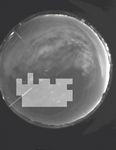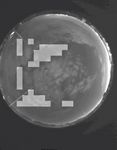Weather control
Weather control
Robotic observatory, optimisation of observation times
In order to maximise observation times in the frequently overcast northwest German region, this project aims to set up a robotic observatory in Wechloy, which will work through an observation list independently of operating personnel when the weather is suitable. The current focus is on the implementation of the controls, the development of a planning software and the weather assessment and prediction. The project is being carried out in cooperation with the Energy Meteorology working group.
1. analysis of the weather condition
In a first step, the current weather conditions are analysed and cloud-free areas are selected. This is done with a combined brightness threshold and star detection algorithm. The observable areas identified in this way are then passed on to several robotic telescopes.




2. control of robotic telescopes
The weather conditions are analysed according to predefined observation lists and then calls are made to corresponding robotic telescopes to take images. At present, 3 modes are possible or in preparation:
(a) Photometric and astrometric sky survey:
An attempt is made to observe the entire visible sky of a night, if possible, in order to search for transient phenomena such as stellar explosions (supernovae, novae, etc.) or minor planets.
b) DeepSky Astrophotography
Using an observation list, DeepSky objects are selected that can be best observed under the given conditions. The resulting images from several nights are then combined.
c) Mobile robotic telescopes
The arrangement allows external access to the weather observation data, so that mobile telescopes can also be remotely controlled automatically via the Internet as long as they are within the usable radius of the AllSky camera.
Minor Planet Astrophysics
This sub-field of astrophysics deals with the small bodies of the solar system. Based on data from the Minor Planet Centre (MPC), this project aims to check the trajectories of known minor planets and to improve the orbital data of minor bodies that are not yet known with sufficient precision. Furthermore, in cooperation with the European Space Agency (ESA), we are working on the distribution and measurement of meteors in the Earth's atmosphere.
Wide Field Imaging
In this special field of astronomy, instruments are used that simultaneously record and analyse a large area of the sky. Optics with shorter focal lengths (e.g. small telescopes, wide-angle and fisheye lenses) and cooled CCD or CMOS sensors are used. Typical applications range from weather assessment, detection of stellar explosions (novae, supernovae), small and exoplanet detection to classical astrophotography. Within the framework of this project, the possible applications and limitations of this technology in the northwest German region are being analysed.
